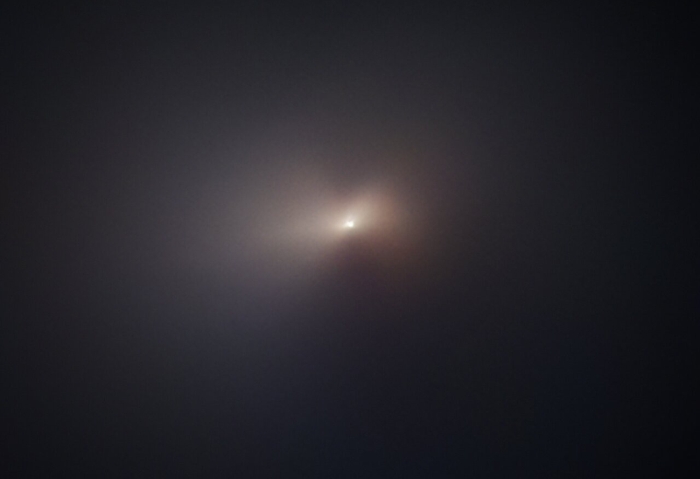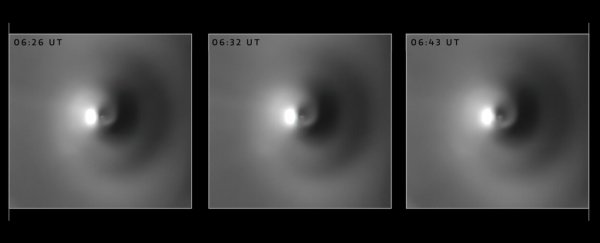When Comet NEOWISE streaked by Earth in July, we were dazzled by a plethora of stunning photographs of the twin-tailed space rock.
But none were remotely like images taken by the Gemini North telescope in Hawaii. In optical wavelengths, the telescope imaged a stream of dust and molecular gas spiralling out from the nucleus - the chunk of rock at the core of the comet.
That gas is spiralling because the nucleus rotates, a bit like a sprinkler spraying out a spiralling stream of water. By studying a series of images taken on August 1, a team of researchers has now calculated the rotation rate of that nucleus.
"The observed morphological evolution implies a rotation period of 7.58 +/- 0.03 hr with no obvious temporal changes or deviations from a simple rotation state over the reported time interval," wrote a team of researchers led by Michal Drahus of the Jagiellonian University in Poland, in a notice posted to the Astronomer's Telegram.

Comet NEOWISE represented an extremely rare research opportunity - the brightest comet in our skies since the appearance of Comet Hale-Bopp in 1997. It made its closest approach to the Sun (perihelion) on July 3, during which time it was too faint to be seen next to the Sun's intense shine.
However, when it emerged from perihelion, the comet was bright enough to be seen at night with the naked eye, and remained so for the rest of July.
Obviously we have had many comets in our sky before, but they are often very faint; the brighter an object is, the easier it is to see fine details we may miss in dimmer objects. So, telescopes across the world took time to look at Comet NEOWISE while it was in our vicinity, before heading back to the outer reaches of the Solar System.
 (NASA, ESA, Q. Zhang/California Institute of Technology, A. Pagan/STScI)
(NASA, ESA, Q. Zhang/California Institute of Technology, A. Pagan/STScI)
The Hubble Space Telescope, for instance, took the closest photographs yet of the comet on August 8 (see above). Its images suggest that the comet's nucleus remained intact after perihelion. This is always a point of interest for outer Solar System comets - known as long-period comets - since they often break up when they approach the Sun.
Comets are balls of rock and volatile ice. As they approach the Sun, the ices sublimate; this outgassing creates an atmosphere of gas and dust around the comet, known as a coma, as well as the comet's tails, one of ionised gas and the other of dust dragged away by the escaping atmosphere.
Scientists believe that a comet's spin is influenced by the outgassing. An uptick in rotation speed has been observed in multiple comets as they approach the Sun, thought to be the result of increased sublimation as heat increases. If this effect is pronounced enough, it can cause the comet to break apart under centripetal instability.
Hubble's image shows a coma that's around 18,000 kilometres (11,000 miles) across; the cometary nucleus itself could be as small as 4.8 kilometres (3 miles) across. The image also shows two outgassing jets that fan out due to the rotation of the nucleus.
Images like that can tell us a lot. They can be studied to ascertain the composition of the coma and tails, and how the colour of the outgassing changes as the comet moves away from the Sun. They can also be used to estimate the rate of outgassing. And these properties can help us to understand the effect the Sun has on the comet.
The outgassing jets are also what we are seeing in the Gemini images. These, and other observations, could help to calculate whether the comet has spun up or down during its trip around the Sun. Drahus and his team note that their calculation is consistent with a rotational period measurement of 7.5 +/- 2.3 hours made on July 21.
Comet NEOWISE is on its way back to the outer Solar System, and we won't see it again in our neighbourhood for over 6,700 years. But, with hundreds of observations in the bag, it's given scientists plenty of data to analyse and mull over for some time to come.
